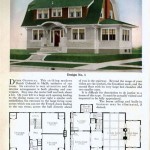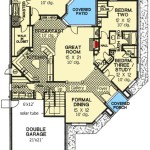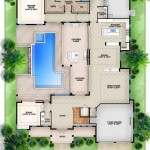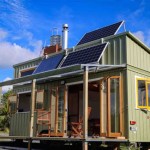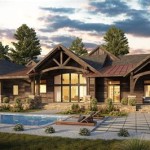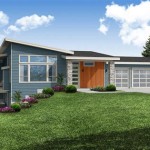Mother-in-law house plans refer to specialized designs for additional dwelling units that are attached to or adjacent to a primary residence. These plans are specifically crafted to accommodate the needs of an elderly parent or family member who requires additional care or assistance while still maintaining their independence and privacy.
The concept of mother-in-law houses has gained popularity in recent years due to the rising number of aging adults and the desire to keep loved ones close without compromising their well-being. These plans offer a balance between providing support and preserving the autonomy of the resident.
In the following sections, we will delve into the various aspects of mother-in-law house plans, including their design considerations, benefits, and potential drawbacks. We will also provide practical tips and advice to help you make informed decisions when choosing and implementing these plans.
When considering mother-in-law house plans, it is important to keep in mind the following key points:
- Accessibility: Ensure easy access for those with mobility challenges.
- Privacy: Provide separate entrances and living spaces for both residents.
- Functionality: Design for both comfort and practicality, with features like grab bars and wider doorways.
- Safety: Include safety measures such as non-slip flooring and emergency call systems.
- Independence: Allow the resident to maintain their autonomy with features like a private kitchen and bathroom.
- Integration: Design the unit to blend seamlessly with the main house, both aesthetically and structurally.
- Space efficiency: Optimize space utilization to create a comfortable and functional living environment.
- Cost-effectiveness: Consider both construction and ongoing maintenance costs to ensure affordability.
- Legal compliance: Adhere to local building codes and zoning regulations.
By carefully considering these points, you can create a mother-in-law house plan that meets the unique needs of your family and provides a safe, comfortable, and dignified living space for your loved one.
Accessibility: Ensure easy access for those with mobility challenges.
When designing a mother-in-law house plan, accessibility should be a top priority. This means creating a space that is easy to navigate for those with mobility challenges, such as the elderly or individuals with disabilities.
One important aspect of accessibility is ensuring that the unit has a step-free entrance. This can be achieved through the use of ramps or zero-threshold doorways. Additionally, the doorways should be wide enough to accommodate wheelchairs and other mobility devices.
Inside the unit, it is important to create a clear and unobstructed path of travel. This means avoiding narrow hallways and cluttered spaces. The flooring should be non-slip and easy to walk on, and there should be grab bars installed in strategic locations, such as the bathroom and shower.
Another important consideration is the placement of furniture and appliances. These should be arranged in a way that allows for easy access and use. For example, the kitchen should be designed with accessible countertops and appliances, and the bathroom should have a roll-in shower or bathtub.
By carefully considering these factors, you can create a mother-in-law house plan that is both accessible and comfortable for those with mobility challenges.
Privacy: Provide separate entrances and living spaces for both residents.
Privacy is an important consideration when designing a mother-in-law house plan. Both the primary residents and the elderly or disabled resident should have their own separate entrances and living spaces. This allows for greater independence and autonomy for both parties.
The primary residence should have its own private entrance, as well as a separate living room, kitchen, and bathroom. This allows the primary residents to maintain their own privacy and routine, without having to worry about disturbing the elderly or disabled resident.
The elderly or disabled resident should also have their own private entrance, as well as a separate living room, kitchen, and bathroom. This gives them a sense of independence and allows them to live their lives with dignity.
In addition to separate entrances and living spaces, it is also important to consider the placement of the mother-in-law unit. The unit should be located in a quiet area of the property, away from the main traffic flow of the house. This will help to ensure that the elderly or disabled resident has a peaceful and restful environment.
By providing separate entrances and living spaces for both residents, you can create a mother-in-law house plan that respects the privacy and independence of all parties involved.
Functionality: Design for both comfort and practicality, with features like grab bars and wider doorways.
When designing a mother-in-law house plan, functionality should be a top priority. This means creating a space that is both comfortable and practical for the elderly or disabled resident.
- Wide doorways and hallways: Wider doorways and hallways allow for easy access for wheelchairs and other mobility devices. They also make it easier for the resident to move around the unit without feeling cramped or confined.
- Non-slip flooring: Non-slip flooring is essential for safety, especially in areas like the bathroom and kitchen. It helps to prevent falls and injuries.
- Grab bars: Grab bars provide support and stability for the resident when getting in and out of the shower or bathtub, or when using the toilet. They can also be used to help the resident stand up from a seated position.
- Accessible kitchen: The kitchen should be designed with accessible countertops and appliances. This means that the countertops should be at a height that is comfortable for the resident to reach, and the appliances should be easy to operate.
By incorporating these features into your mother-in-law house plan, you can create a space that is both comfortable and practical for the elderly or disabled resident.
Safety: Include safety measures such as non-slip flooring and emergency call systems.
Safety is a paramount consideration in mother-in-law house plans. The elderly or disabled resident may be more vulnerable to accidents and injuries, so it is important to take steps to make the unit as safe as possible.
- Non-slip flooring: Non-slip flooring is essential in areas like the bathroom and kitchen, where there is a risk of slips and falls. It is also a good idea to use non-slip mats in other areas of the unit, such as the bedroom and living room.
- Grab bars: Grab bars provide support and stability for the resident when getting in and out of the shower or bathtub, or when using the toilet. They can also be used to help the resident stand up from a seated position. Grab bars should be installed in strategic locations throughout the unit, such as the bathroom, shower, and next to the toilet.
- Emergency call system: An emergency call system allows the resident to call for help in case of an emergency. The system should be easy to use and should be located in a convenient location, such as the bedroom or bathroom.
- Smoke and carbon monoxide detectors: Smoke and carbon monoxide detectors are essential for safety in any home, and they are especially important in mother-in-law house plans. The detectors should be installed in all bedrooms and common areas, and they should be tested regularly.
By incorporating these safety measures into your mother-in-law house plan, you can help to ensure that the elderly or disabled resident is safe and secure.
Independence: Allow the resident to maintain their autonomy with features like a private kitchen and bathroom.
Private kitchen
A private kitchen allows the elderly or disabled resident to prepare their own meals and snacks, which gives them a sense of independence and control over their daily routine. The kitchen should be designed with accessible features, such as lower countertops and pull-out shelves, to make it easy for the resident to use. It should also be equipped with appliances that are easy to operate, such as a microwave and a stove with front-mounted controls.
Private bathroom
A private bathroom allows the elderly or disabled resident to maintain their privacy and dignity. The bathroom should be designed with accessible features, such as a roll-in shower or bathtub, a raised toilet seat, and grab bars. It should also be well-lit and ventilated.
Other features that promote independence
In addition to a private kitchen and bathroom, there are a number of other features that can be incorporated into a mother-in-law house plan to promote the independence of the elderly or disabled resident. These features include:
- Wide doorways and hallways: Wide doorways and hallways allow the resident to move around the unit easily and safely, even if they use a wheelchair or other mobility device.
- Non-slip flooring: Non-slip flooring helps to prevent falls and injuries, which is especially important for elderly or disabled residents.
- Grab bars: Grab bars provide support and stability for the resident when getting in and out of the shower or bathtub, or when using the toilet.
- Emergency call system: An emergency call system allows the resident to call for help in case of an emergency.
By incorporating these features into your mother-in-law house plan, you can help to create a space that allows the elderly or disabled resident to maintain their independence and dignity.
Integration: Design the unit to blend seamlessly with the main house, both aesthetically and structurally.
Aesthetic integration
The mother-in-law unit should be designed to blend seamlessly with the main house in terms of its architectural style and exterior finishes. This can be achieved by using similar materials, colors, and design elements. For example, if the main house is a traditional brick home, the mother-in-law unit could be constructed of brick or stone with a similar color and texture. The unit should also be designed to complement the scale and massing of the main house, so that it does not appear to be an afterthought.
Structural integration
The mother-in-law unit should be structurally integrated with the main house in a way that creates a cohesive and secure structure. This means that the unit should be attached to the main house in a way that ensures that it is not susceptible to movement or damage. The unit should also be designed to meet the same building codes and standards as the main house, so that it is safe and habitable.
Functional integration
The mother-in-law unit should be functionally integrated with the main house in a way that allows for easy access and use. This means that the unit should be located in a convenient location, and that it should have its own private entrance and outdoor space. The unit should also be designed to allow for easy access to the main house, so that the elderly or disabled resident can easily visit with family and friends.
Paragraph after details
By carefully considering all of these factors, you can design a mother-in-law house plan that seamlessly integrates with the main house, both aesthetically and structurally. This will create a cohesive and comfortable living space for the elderly or disabled resident, while also maintaining the integrity and value of the main house.
Space efficiency: Optimize space utilization to create a comfortable and functional living environment.
Space efficiency is an important consideration when designing a mother-in-law house plan. The unit should be designed to make the most of the available space, while still providing a comfortable and functional living environment for the elderly or disabled resident.
- Use built-in furniture: Built-in furniture, such as Murphy beds and wall-mounted desks, can help to save space in a small unit. These types of furniture can be folded up or hidden away when not in use, freeing up valuable floor space.
- Choose multi-purpose furniture: Multi-purpose furniture, such as ottomans with built-in storage or coffee tables with pull-out drawers, can help to maximize space utilization. These types of furniture pieces serve multiple functions, eliminating the need for additional furniture and clutter.
- Vertical storage: Vertical storage solutions, such as shelves and drawers, can help to make the most of the available space in a small unit. These types of storage solutions allow you to store items vertically, freeing up valuable floor space.
- Declutter and purge regularly: Decluttering and purging regularly can help to reduce the amount of stuff in the unit, making it feel more spacious and less cluttered. Donate or discard items that are no longer needed or used, and keep only the essentials.
By following these tips, you can optimize space utilization and create a comfortable and functional living environment in your mother-in-law house plan.
Cost-effectiveness: Consider both construction and ongoing maintenance costs to ensure affordability.
Cost-effectiveness is an important consideration when designing and building a mother-in-law house plan. You need to ensure that the unit is affordable to build and maintain, both in the short-term and long-term.
- Construction costs: The cost of constructing a mother-in-law house plan will vary depending on a number of factors, including the size of the unit, the materials used, and the complexity of the design. It is important to get bids from multiple contractors before making a decision, and to factor in the cost of permits and inspections.
- Ongoing maintenance costs: The ongoing maintenance costs of a mother-in-law house plan will also vary depending on a number of factors, including the size of the unit, the materials used, and the climate in which you live. These costs may include utilities, repairs, and landscaping.
- Affordability: It is important to make sure that the cost of constructing and maintaining a mother-in-law house plan is affordable for you and your family. You should factor in the cost of construction, ongoing maintenance, and any potential additional costs, such as the cost of caregiving.
- Long-term costs: It is also important to consider the long-term costs of a mother-in-law house plan. This includes the cost of any modifications or renovations that may be necessary as the elderly or disabled resident ages, as well as the potential cost of selling the unit in the future.
By carefully considering all of these factors, you can make informed decisions about the design and construction of a mother-in-law house plan that is both affordable and meets the needs of your family.
Legal compliance: Adhere to local building codes and zoning regulations.
When designing and building a mother-in-law house plan, it is important to ensure that the unit complies with all local building codes and zoning regulations. This is essential for ensuring the safety and habitability of the unit, and to avoid any potential legal issues.
- Building codes: Building codes are regulations that govern the construction of buildings. These codes are in place to ensure that buildings are safe and habitable, and to protect the health and safety of the occupants. Building codes may include requirements for the structural integrity of the building, the electrical and plumbing systems, and the fire safety features.
- Zoning regulations: Zoning regulations are regulations that govern the use of land. These regulations may include restrictions on the types of buildings that can be built in a particular area, the size of the buildings, and the setbacks from property lines. Zoning regulations are in place to ensure that land is used in a compatible and orderly manner, and to protect the character of neighborhoods.
- Permits: Before you can start construction on a mother-in-law house plan, you will need to obtain a building permit from your local building department. The building permit will authorize you to construct the unit in accordance with the approved plans and specifications.
- Inspections: Once you have obtained a building permit, your local building department will conduct inspections to ensure that the unit is being constructed in accordance with the approved plans and specifications. The inspections will typically include a framing inspection, a plumbing inspection, an electrical inspection, and a final inspection.
By adhering to local building codes and zoning regulations, you can ensure that your mother-in-law house plan is safe, habitable, and legally compliant.










Related Posts


